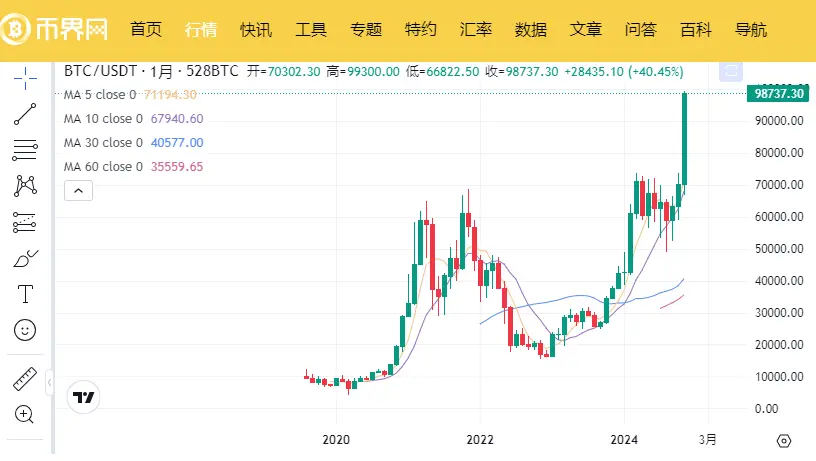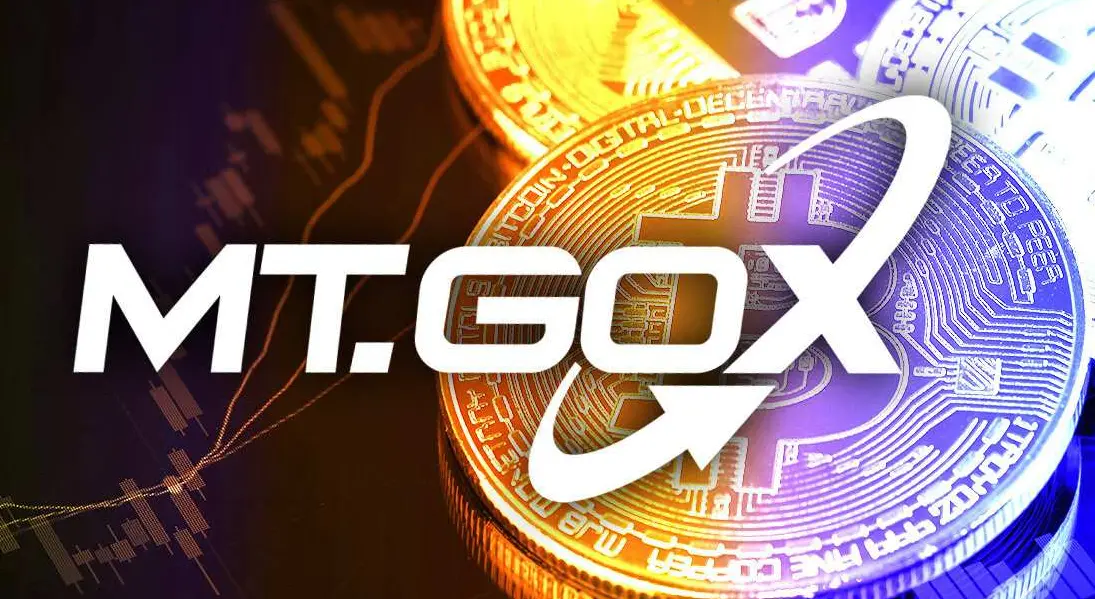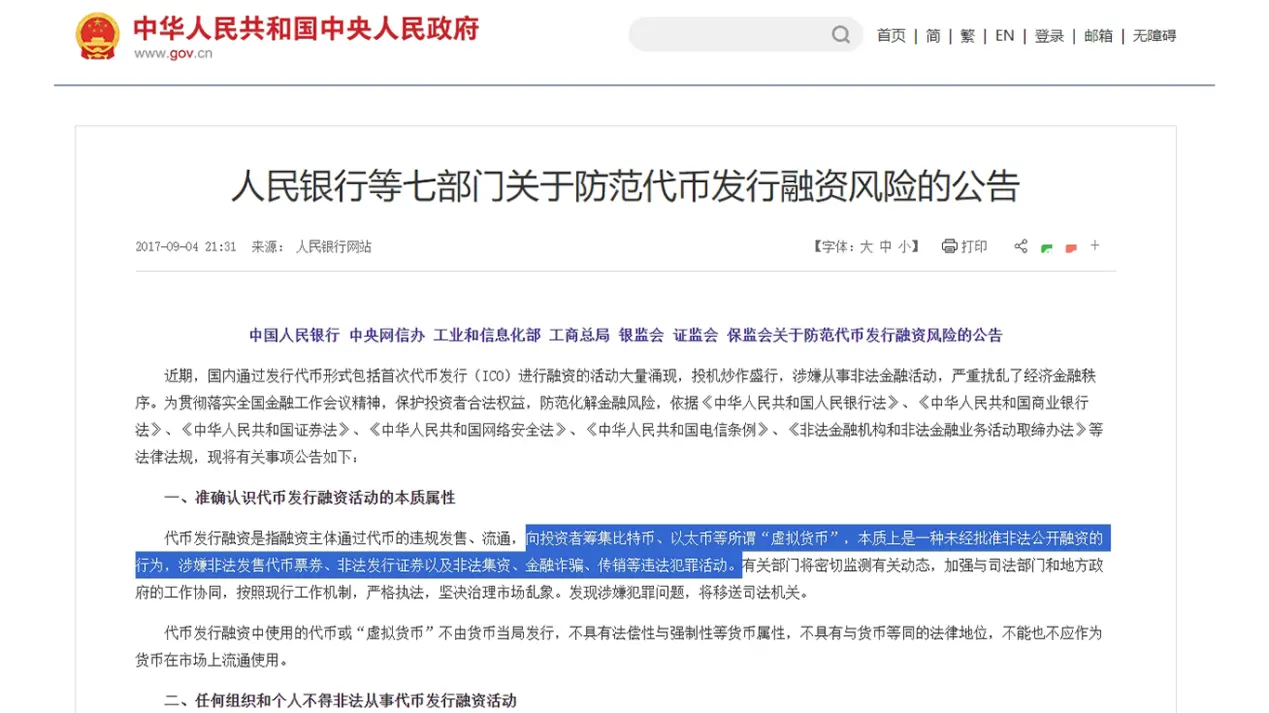Author: 636Marx
The symbol for Bitcoin is a "B" with two vertical lines added, similar to the dollar sign "$" with an additional line. BTC is the world's first truly decentralized digital currency, and its transformation from a niche digital experiment to a global financial force is remarkable. The journey from a few cents to $100,000 reflects a fundamental shift in technology, finance, and collective psychology. This article will explore the key events and catalysts behind Bitcoin's most significant price breakthroughs, outlining the trajectory from five figures to six figures.

I. Bitcoin's First $10,000 Breakthrough
In November 2017, Bitcoin first broke through the $10,000 mark, marking its official entry into the mainstream financial arena. This milestone transformed Bitcoin from a geek exploration object into a globally recognized digital asset, drawing significant attention from institutional investors for the first time.
Key Drivers
Mainstream Awareness: Bitcoin's rapid rise in 2017 attracted public attention, and media coverage fueled a widespread crypto investment frenzy.
Infrastructure Development: Platforms like MT.gox, Huobi, Coinbase, and OKex simplified the purchasing and wallet usage processes for ordinary users, making Bitcoin more accessible.
Speculative Frenzy: Driven by FOMO (fear of missing out), a large number of retail investors flooded into the market, driving up prices.
Despite reaching this milestone, Bitcoin still faced significant crises. Mainstream media viewed it as a speculative bubble, while regulatory uncertainties and price volatility kept institutional investors on the sidelines.

II. Bitcoin's First Major Bull Market: $20,000
By the end of 2017, Bitcoin soared from $10,000 to $20,000, experiencing a period of intense speculation. Although the price doubled in just a few weeks, this surge lacked solid fundamental support.
Key Drivers
ICO Frenzy: Blockchain startups began to mimic stock market IPOs by launching ICOs (Initial Coin Offerings). Most projects used Bitcoin as the primary investment medium, as there were no laws against "illegal fundraising" in China.
Market Sentiment: Crypto investment began to expand from first-tier cities to third- and fourth-tier cities, creating a self-reinforcing upward cycle of optimism and bullish sentiment.
Volatility: After reaching nearly $20,000 in December 2017, Bitcoin entered a prolonged bear market, with over 80% of its market value evaporating in 2018.
Regulatory Tightening: Governments worldwide intensified regulations on ICOs and digital currencies.
On September 4, 2017, the People's Bank of China declared ICOs illegal financial activities and ordered related exchanges to shut down. After discussions with crypto project leaders, the market reacted strongly to the government's determination to ban cryptocurrencies, leading to a price crash. Beijing's regulatory requirements mandated the closure of exchanges by 24:00 on the 15th, resulting in Binance's BTC dropping over 20% on the 14th and falling to $2,817 on the 15th.

III. Bitcoin Breaks Through the Bottleneck: Institutional Entry
In December 2020, Bitcoin approached $20,000 for the second time, fundamentally different from the speculative frenzy of 2017. This rise was driven by institutional interest and macroeconomic factors.
Key Drivers
Institutional Adoption: Large companies like MicroStrategy and Tesla incorporated Bitcoin into their balance sheets, validating its long-term value proposition.
Halving Effect: The third halving in May 2020 reduced Bitcoin's inflation rate, creating upward momentum.
COVID-19 Pandemic: Economic uncertainty and unprecedented monetary stimulus prompted investors to view Bitcoin as an inflation hedge.
Volatility Opportunities: At this time, Bitcoin's price exhibited significant cyclical volatility, attracting many long-term and cyclical investors.
A DIY Bitcoin mining company in China successfully went public on NASDAQ on November 21, 2019, at 23:00 Beijing time. The stock price surged 40% from its IPO opening, with a market value exceeding 10 billion RMB. The author believes that before the emergence of Bitcoin ETFs, mining was the primary source of capital inflow into Bitcoin. Zhang Nengeng's Canaan Creative outpaced Wu Jihan's Bitmain, becoming the first blockchain stock!

IV. From $30,000 to $60,000: Retail Enthusiasm and Corporate Recognition
From January to April 2021, Bitcoin rapidly climbed from $30,000 to over $60,000, with retail investor enthusiasm and institutional recognition advancing in tandem.
Key Drivers
Tesla Investment: Tesla's $1.5 billion Bitcoin investment and brief acceptance of Bitcoin payments enhanced the legitimacy of digital currencies.
Social Media Momentum: The "laser eyes" movement on X (formerly Twitter) garnered widespread response from retail investors.
ETF Progress: Bitcoin futures ETFs gained traction, indicating a more open regulatory stance.
In 2021, China explicitly banned Bitcoin mining. On May 12, "crypto KOL" Elon Musk stated on X that Tesla had "suspended vehicle purchases using bitcoin" due to concerns over the "rapid increase in fossil fuel usage for Bitcoin mining." Following Musk's announcement, Bitcoin began to decline within minutes, as he seemed to attempt to influence Bitcoin's price.

V. Bitcoin Breaks the $70,000 Barrier: Inflation and Hedging
In November 2021, Bitcoin approached $69,000, reinforcing its status as an inflation hedge and safe-haven asset during periods of geopolitical uncertainty.
Key Drivers
Inflation Concerns: Rising global inflation highlighted Bitcoin's value as a deflationary asset.
Institutional Products: The U.S. approved Bitcoin futures ETFs, broadening traditional investment channels.
Geopolitical Events: The Russia-Ukraine conflict underscored Bitcoin's value as a censorship-resistant asset.
On February 24, 2022, political maneuvers to thwart NATO's sixth eastward expansion failed, igniting a two-and-a-half-year war in Ukraine. The West donated hundreds of millions of dollars in Bitcoin to Zelensky, with documented donations exceeding $80 million. Russia had $300 billion in sovereign assets frozen, equivalent to 20.27% of its GDP that year, and even showcased military Bitcoin mining sites on "Red Star TV." The ongoing Russia-Ukraine war has become a trench warfare scenario, with no clear end in sight for the next two and a half years.

VI. Bitcoin's $100,000 Babel Tower: Freedom and Greed
As the author writes, Bitcoin has reached $99,419.99, and as it approaches $100,000, multiple factors indicate that achieving this milestone is based on more than mere speculation.
Key Drivers
Spot Bitcoin ETF: The potential approval of a spot ETF could unleash trillions in institutional funds.
2024 Halving: The halving in April 2024 will further tighten Bitcoin's supply, catalyzing a new bull market.
Global Adoption: El Salvador and the Central African Republic have adopted Bitcoin as legal tender, paving the way for broader acceptance.
De-dollarization: Countries seeking alternatives to the dollar are using Bitcoin for international trade and reserves.
The Tower of Babel comes from the first book of the Christian Old Testament, where humanity builds a tower to reach heaven. Ultimately, the shortcut to heaven is destroyed by language and ambiguity. Bitcoin is Satoshi Nakamoto's attempt to eliminate currency inflation and the cyclical risks of the banking system.
The first user of Bitcoin was programmer Laszlo Hanyecz, who used 10,000 BTC to buy two pizzas on May 22, 2010. The first large-scale use occurred in February 2011 on the dark web "Silk Road," where Bitcoin was used for various illegal transactions. The Silk Road was dismantled by the FBI in October 2013, with a staggering transaction volume of $214 million. This is remarkable considering that Bitcoin was mostly around $10 per coin at that time. Subsequent statistics show that the total sales on the Silk Road amounted to approximately 9.52 million Bitcoins.
Today, Bitcoin is recognized by large publicly traded companies and multinational corporations. Its infinite divisibility, Bitcoin encapsulation, and the emergence of altcoins are creating new inflation. Cyclical halvings, crypto KOLs, and institutional investors continuously generate new systemic financial risks for Bitcoin.
The author notes in Stavridis' "A Global History" that humans completed migrations across seven continents 50,000 years ago, while the Silk Road in China only emerged during the Western Han Dynasty. As the Old Testament states—a land flowing with milk and honey, a group of people speaking a single language—this occurred in the ancient East.
The author believes that this "group of people speaking a single language" should adopt the correct strategy towards Bitcoin. The World Bank has pointed out in its reports: "Bitcoin was not a deliberate Ponzi scheme."
The author believes that Bitcoin is a borderless pyramid scheme.
免责声明:本文章仅代表作者个人观点,不代表本平台的立场和观点。本文章仅供信息分享,不构成对任何人的任何投资建议。用户与作者之间的任何争议,与本平台无关。如网页中刊载的文章或图片涉及侵权,请提供相关的权利证明和身份证明发送邮件到support@aicoin.com,本平台相关工作人员将会进行核查。




